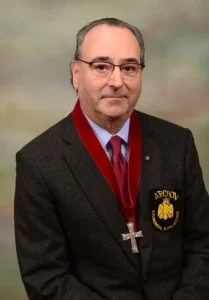It’s a little-known fact: without faith, there would be no art.
While numerous people today derive inspiration and insight from the world’s artistic treasury, few are aware of the history and development of the artistic tradition, or how the great masterpieces of Leonardo da Vinci, Michelangelo, and so many others came to be.
Not only are the works of those great masters largely expressions of the Christian Faith, including Michelangelo’s Davidand the Pietá, and Leonardo’s The Last Supper, but were it not for the Christian Faith, these magnificent artistic geniuses might not have been artists at all. The reason for this goes all the way back to the eighth century AD, and to the seventh Ecumenical Council of the Church, the Second Council of Nicaea in 787.
The Second Council of Nicaea was convened in order to settle a controversy that was raging over the legitimacy of the sacred icons, the images of the Lord Jesus, His All-Holy Mother, and the saints that were found in Orthodox Churches. Orthodox Christians believed the sacred icons to be aids to worship, as they taught the faith in pictures to a people among whom literacy was by no means universal, and served as a “window to heaven,” depicting through various stylistic means the reality of the life in Christ in this world and the next.
Some people, however, contended that the Ten Commandments’ prohibition on fashioning “a graven image, or any likeness of anything that is in heaven above, or that is in the earth beneath, or that is in the water under the earth” (Exodus 20:4) meant that the holy icons, and, indeed, all representational art, was sinful, and should be removed from churches. Those who cherished the icons countered that the Lord Jesus Christ was the “image of the invisible God” (Colossians 1:15), and that by becoming man, He had sanctified the material world. As the image of God Himself, Christ could be depicted, as could those who had been redeemed and sanctified by His grace.
After much prayer and deliberation, the Second Council of Nicaea declared that the sacred images were indeed legitimate as aids to worship, and should continue to decorate the churches and Christian homes. This did not just settle a theological controversy; it bestowed the approval of the Church, which was at that time the foremost institution in Europe and other areas where Christianity had become dominant, upon representational art as a whole. If this decision had gone the other way, it is possible, and indeed, likely, that Christian rulers in Europe and elsewhere would have suppressed representational art as contrary to the Christian Faith, and the world would never have known the great master works that are part of the global artistic patrimony today.
Art and Faith remain today in a symbiotic relationship. The controversy over the icons was just one way in which the Church has demonstrated its awareness of the power of art to exalt the heart, mind, and soul to God. Artistic masters through the ages, meanwhile, and in many non-Christian as well as Christian traditions, have been inspired by their faith to create enduring masterpieces that appeal to the spirit even of those who belong to other faith traditions.
As people of faith, our own faith commitment can be powerfully enriched by cultivating and developing a profound appreciation for the great works of art that are products of the faith of those who created them. Faith builds upon faith, and the faith of the great artists of past times, as well as of the present, can move our souls to the contemplation of the divine beauty. And while as people of faith, we have respect and love for all human beings, including those who have no faith, we can with great gratitude to God affirm that among the many virtues of faith, one that is often overlooked is that faith is beautiful. The artistic masterpieces of the world prove that.







